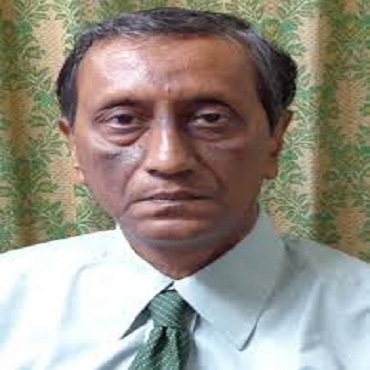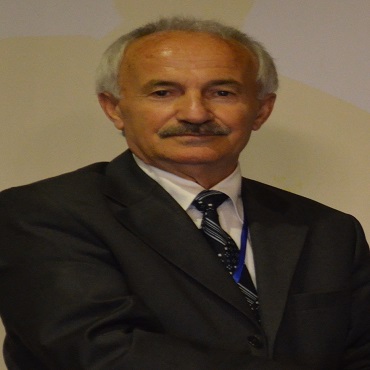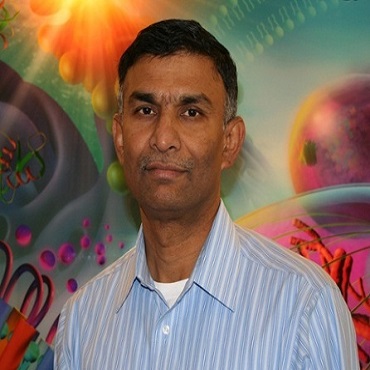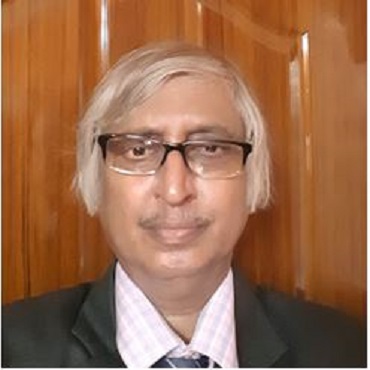Scientific Program
Keynote Session:
Title: Love or hate water?
Biography:
L. Q. Rick Wang is currently a professor in the Department of Mechanical Engineering, the University of Hong Kong (HKU). He also serves as the Director and the Chief Scientist for the Laboratory for Nanofluids and Thermal Engineering at the Zhejiang Institute of Research and Innovation (HKU-ZIRI), the University of Hong Kong. Prof. Wang has over 20 years of university experience in transport phenomena, materials, nanotechnology, biotechnology, energy & environment, thermal & power engineering, and mathematics, and 2 years of industry experience in technology and IP development/management/transfer as the Chief Scientist & the Global CTO. In addition to 6 authored scholarly monographs/books, 4 edited scholarly monographs, 8 book chapters, 63 keynote lectures at international conferences and over 120 invited lectures in universities/industries/organizations, He has published 200+ papers in various prestigious Journals, many of which have been widely used by researchers all over the world. He has also filed 30+ patents/software copyrights, and developed, with an international team consisting of about 100 scientists and engineers, a state-of-the-art thermal control system for the Alpha Magnetic Spectrometer (AMS) on the International Space Station (ISS).Prof. Wang’s work has been widely featured by local, national and international media, and received recognition through a number of awards, including the 2018 Tech Connect Global Innovation Award, the 2018 Silver Medal of the International Exhibition of Inventions of Geneva, the 2017 OSA Innovation Award, and the 2016 First Outstanding Achievement Award of Hangzhou Oversea Scholars.
Abstract:
This talk is on three techniques recently developed at HKU that use bioinspired microstructures to precisely manipulate liquids: water collecting, liquid repelling, and droplet capturing/releasing.
Unique structural and topological features of spider-silks and their web enable them being a super water collector witnessed by a large number of water droplets handing on them in the early morning. With the microfluidic technology, we have precisely fabricated robust microfibers with spindle cavity-knots and different topological fiber-networks in mimicking these features. These microfibers are endowed with unique surface roughness, mechanical strength, and long-term durability, thus enabling a super performance in collecting water. The maximum water volume collected on a single knot is almost 495 times the knot volume; the water collection is even more efficient and scalable with their networks. These light-weighted yet tough, low-cost microfibers offer promising opportunities for water collection in water-deficient areas.
Liquid-repellent surfaces repel liquids instead of allowing droplets to adhere. These surfaces are important in many fields including self-cleaning clothes and kitchenware, enhanced heat transfer, and anti-fouling, anti-corrosive and drag reduction coatings. The dream of research and development on liquid-repellents is a structure that has robust liquid repellency, strong mechanical stability, and is inexpensive to produce on a commercial scale. However, the functional outcomes of existing liquid-repellent surfaces have not been satisfactory, because of inadequacies of conventional structural design and fabrication approaches in engineering microstructures and properties of such surfaces. We developed a low-cost scalable approach for the fabrication of well-defined porous surfaces with robust liquid repellency and strong mechanical stability. The design of the liquid-repellent surfaces is inspired by structures on springtail cuticles, which can effectively resolve the longstanding conflict between the liquid repellency and the mechanical stability. Springtails are soil-dwelling arthropods whose habitats often experience rain and flooding. As a consequence, springtails have evolved cuticles with strong mechanical durability and robust liquid repellency to resist friction from soil particles and to survive in watery environments. We design the porous surfaces to be composed of interconnected honeycomb-like microcavities with a re-entrant profile: the interconnectivity ensures mechanical stability and the re-entrant structure yields robust liquid repellency. The cuticle-like porous surfaces are fabricated by self-assembly using microfluidic droplets, which takes full advantage of the capabilities of microfluidics in terms of scalability and precise-handling of small fluid volumes. The generation of these cuticle-like porous surfaces using microfluidics has led to precise, controllable, scalable, and inexpensive fabrication.
Some semiaquatic insects can readily walk on water and climb up menisci slope due to the dense hair mat and retractable claws of complementary wettability on their tarsi. Inspired by this, we created a mechano-regulated surface whose adhesive force to liquid droplets can be simply switched through mechanical regulation. The mechano-regulated surface functions as a “magic hand” that can capture and release multiple tiny droplets precisely in a loss-free manner, and works for both water and oil droplets down to nano-litre scale. These surfaces are relevant and crucial in various high-precision fields such as medical diagnosis and drug discovery where the precise transferring of tiny liquid is a must.
Learning from nature paves the way for creating nano/microstructures with unique features to interact with liquids on-demand. Small yet powerful, these structures can manipulate liquids effectively and precisely. With these techniques, water may be gathered directly from the air in deserts, no more laundry may become true, and liquids can be conveniently handled like solids.
Title: Greener synthesis of biological and pharmaceutical compounds
Biography:
Ahindra Nag is an Associate Professor of organic chemistry in Chemistry Department , Indian Institute of Technology, Kharagpur, India. He has got 32 years teaching and research experiences. He has published 80 journal papers , 10 text books and three patents. He has guided twelve students and was visiting Professor in different universities such as Taiwan( Academia sinica), Rome ( Campobossa) and America ( Tennessee, USA)
Abstract:
β-amino alcohols and its derivatives are the versatile intermediates for synthesis of biologically active natural compounds. For ring opening of epoxides, several groups have been used various type of catalyst like lewis acids, metal salts, lanthanide halides, triflates, boranes, heterogeneous catalysis, ionic liquids and alumina. But we have synthesized these derivatives by synthesis of new type of epoxides by using this below mentioned synthetic route (Scheme 1) where ACC juice has been used1-4. Again, we are interested to synthesize biscoumarins and pyranocoumarins which have also biological and pharmaceutical applications. Biscoumarin and Bis indoyl methane which can be used to treat anaphylaxis, cardiac arrest and superficial bleeding has been synthesised using waste material (Scheme 2).
Title: Crystallographic reactions in formation of dual structural transformations in shape memory alloys
Biography:
Osman Adiguzel graduated from Department of Physics, Ankara University, Turkey in 1974 and received PhD- degree from Dicle University, Diyarbakir-Turkey. He has studied at Surrey University, Guildford, UK, as a post doctoral research scientist in 1986-1987, and studied on shape memory alloys. He worked as research assistant, 1975-80, at Dicle University and shifted to Firat University, Elazig, Turkey in 1980. He became professor in 1996, and he has already been working as professor. He published over 60 papers in international and national journals; He joined over 100 conferences and symposia in international and national level as participant, invited speaker or keynote speaker with contributions of oral or poster. He served the program chair or conference chair/co-chair in some of these activities. In particular, he joined in last five years (2014 - 2018) over 50 conferences as Keynote Speaker and Conference Co-Chair organized by different companies. He supervised 5 PhD- theses and 3 M.Sc- theses.
Abstract:
Shape memory effect is a peculiar property exhibited a series of alloy system called shape memory alloys, which have dual characteristics called thermoelasticity and superelasticity, from view point of memory behavior. Two successive structural transformations, thermal and stress induced martensitic transformations govern shape memory phenomena in crystallographic basis. Thermal induced martensite occurs along with crystal twinning in self-accommodating manner on cooling, and ordered parent phase structures turn into twinned martensite structures. Stress induced martensitic transformations occur along with crystal or lattice detwinning reaction by stressing material in low temperature condition. Shape memory alloy exhibit another property called superelasticity, which is performed by stressing and releasing material at a constant temperature in parent phase region, and shape recovery is performed simultaneously upon releasing the applied stress. Superelasticity is performed in non-linear way; stressing and releasing paths are different in the stress-strain diagram, and hysteresis loop refers to energy dissipation.
The elementary processes involved in such martensitic transformations are lattice invariant shear, lattice twinning and detwinning. It is well known that crystal twinning and detwinning reactions play a considerable role in shape memory effect and superelasticity. Thermal induced martensitic transformation is a lattice-distorting phase transformation occurs with the cooperative movement of atoms by means of shear-like mechanism, and martensite variants occur. Martensitic transformations occur by two or more lattice invariant shears on a {110} -type plane of austenite matrix which is basal plane or stacking plane for martensite. Lattice invariant shear is not uniform in copper based shape memory alloys, and cause to the formation of long-period layered martensitic structures with lattice twinning on cooling.In the present contribution, electron diffraction and x-ray diffraction studies performed on two copper based CuZnAl and CuAlMn alloys. Electron diffraction patterns and x-ray diffraction profiles show that these alloys exhibit super lattice reflections in martensitic condition. Specimens of these alloys aged at room temperature in martensitic condition, and a series of x-ray diffractions were taken duration aging at room temperature. Reached results show that diffraction angles and peak intensities change with aging time at room temperature. In particular, some of the successive peak pairs providing a special relation between Miller indices come close each other, and this result leads to the rearrangement of atoms in diffusive manner.
Title: DOZN - A quantitative green chemistry evaluator
Biography:
Ettigounder Ponnusamy, As a founder of Sigma-Aldrich's Green Chemistry team in 2007, developing MilliporeSigma's Corporate Green Chemistry initiatives, managing/expanding new Green Business Opportunities, Greener Alternatives R&D and greener product developments. Developed an unique and state of the art Quantitative Green Chemistry Evaluator, DOZN system based on the Twelve Green Chemistry Principles. Also have extensive experiences in applying concepts of Polymer/Organic Chemistry and process technology skills for developing new and innovative bio-polymers for drug delivery applications. I have managed product developments to successfully introduce new products that have recorded sustained growth (>$50 millions). Have extensive knowledge in managing product developments from bench scale through product launch.
Abstract:
MilliporeSigma created a unique web-based greener alternative scoring matrix, also known as DOZN™- A Quantitative Green Chemistry Evaluator based on the 12 principles of green chemistry. The 12 principles of green chemistry provide a framework for learning about green chemistry and designing or improving materials, products, processes and systems. DOZN™ scores products based on metrics for each principle and aggregates the principle scores to derive a final aggregate score. The system calculates scores based on manufacturing inputs, Globally Harmonized System (GHS) and Safety Data Sheet (SDS) information which provide a green score for each substance and is flexible enough to encompass a diverse portfolio of products ranging from chemistry to biology based products. The DOZN™ system has also been verified and validated by a third party to ensure best practices are applied. This new Greener Chemistry initiative offer customers’ an increased breadth of Greener Alternative products with confirmatory documentations to validate greener characteristics.
Title: Bifacial solar PV technology initiate a new pathway to future PV
Biography:
Utpal Gangopadhyay received his Master of Science degrees from Kalyani University, Nadia, West Bengal in 1981. He received his Ph.D degree in “Solar Photovoltaic” also from Kalyani University in May 1989. He has two Indian patents and published two books under NOVA publisher USA. He had an experience of 28 years in research and 12 years in teaching. He is presently appointed as the professor in the department of Basic Science & Humanities in Meghnad Saha Institute of Technology, Kolkata under West Bengal University of Technology.
Abstract:
In the recent development of Photovoltaic market, increase of demand of more efficient and cost effective technology in order to compete against conventional energy sources and also other renewable sources of energy. In last decade Solar photovoltaic cells and modules through different structural and fabrication approaches have improved significantly in terms of efficiencies and power output. The efficiency value of crystalline silicon solar cells has approached the so called Auger limit 29.4%. Efficiency values exceeding 22% which were feasible only with laboratory solar cells ten years ago can be achieved today with industrially produced structure, whereas prototypes already reach values above 26%.
Manufacturers now a day are investigating the total value chain from the polysilicon to the kilowatt-hour. They are main emphasis on higher efficiency, reliability production efficiency, power output and boosts system performance. Recently, PV manufacturers have increased the focus on improving efficiency with advanced cell architectures and module markers were interested in glass-glass module configurations. The move in particular towards mass production of PERC and other advanced cell technologies and transparent backside products is now enabling solar’s evolution to bifacial technology.
The choice at the cell level to go bifacial is mainly between PERC, PERT and heterojunction (HJT). However, PERC is clearly predominant, because it is now so wide spread and almost has become a standard in today’s p-type monocrystaline segment. Moving from PERC to bifacial technology is not only easy, but also almost free for manufacturers as basically no additional cost is involved to turn a monofacial PERC cell into a PERC bifacial cell (it only requires to change the rear contact grid). But PERC comes with a caveat- and that is lower bifaciality of 70 to 80%. On the other hand, PERC and HJT, which are based on n-type and intrinsically bifacial in nature, have higher bifaciality of up to 90% and above 90%.
Bifacial cells are more and more appearing on the market. However, the combination of plateauing peak efficiencies from standard screen printed solar cells and significant reduction in the cost of solar glass in the recent years-making the use of double-sided glass encapsulation viable-has pushed bifacial solar modules back into the spotlight. Therefore, the bifacial PV looks to work its way towards a larger share of PV market.
Title: Distributions of nicotine and cotinine in rat plasma, tooth, alveolar bone and brain from long-tern passive smoking rats and their impacts on dental health
Biography:
Yong-Xi Li has completed his educations in Beijing Institute of Petroleum Research in China and Postdoctoral training at Cornell University, USA. Currently he is Executive Director at Medpace Bioanalytical Laboratories focusing on bioanalytical analysis, including TK, PK, ADA and Nab method developments, validations and sample analysis for small molecule, polypeptides, protein and antibody therapies. He has published more than 150 papers and one book in reputed journals and publishing house and serving as organization committee and Keynote speaker for several biotech conferences.
Abstract:
Smoking and passive smoking on the earth are very common phenomena which make our world and environment not clean and not green. Based on previous experimental work on Rat by intraperitoneal injection of nicotine, a new designed rat tests are carried out. 30-40 rats were tested in a box in which commercial cigarettes were burned continually for 3 months as passive smokers. At the end of each month (1, 2 and 3 months), some rats were sacrificed, then, samples for plasma, brain, teeth bone, alveolar bone and Shin bone were collected for the analysis of concentrations of Nicotine and Cotinine.
For plasma and brain homogenized samples, protein precipitation extraction by Acetonitrile, and further clean up by PEP 96 well micropates were used prior to quantitation analysis on Sciex 5500 triple quadrupole LC-MS/MS system. For bone tissue, ground bones were dissolved in HCl overnight. After dissolved samples were neutralized, the liquidized bone samples were loaded on the same SPE microplate for extractions of nicotine and cotinine, as well as added their deuterated internal standards. The chromatographic separation was achieved on C18 column (100 × 2.1 mm) with gradient operation. The MRM transitions on +ESI mode were monitored at m/z 163.1 ® 130.1 for nicotine, m/z 177.1 ® 80.1 for cotinine. Calibration range were from 0.5 ng/g to 100 ng/g for all bones, 0.5 ng/mL to 100 ng/mL for plasma and brain.
Preliminary results have shown that 1) In plasma: T1/2 could be as long as 2-3 months and clearance periods are very long without decay which showed typical characteristic of a chronic drug; and Cmax of Nicotine for such passive smoking rats is around 1 month, and metabolite of Cotinine: 2 months. Due to long residuals in blood, when they flow to entire body which will cause long term damage for all organs. 2) In Brian: Basically, the same periods of T1/2 and Cmax as in plasma observed. However, an important difference is that base constant high levels of nicotine and cotinine lasted for a long period of time even till another 64 days after passive smoking stopped. 3) Acumination of Nicotine and Cotinine in bone tissues had order of Alveolar bone > Tooth>Shin bone. It can be understanding that, for Alveolar bone, acumination can come from two sources: from blood, and from tooth adsorption. These can cause surround tissue damaged and enhancements of the toxicity of periodontal anaerobes by cotinine and nicotine. From above studies, we need to improve our environment to green.
Title: Multifunctional solar systems for cooling, heating and power generation
Biography:
Roonak Daghigh received her PhD degree (2011) in Mechanical Engineering from National University of Malaysia. She has also obtained his Master and Bachelor degrees in Mechanical Engineering and Chemical Engineering from University Putra Malaysia and Iran University of Science and Technology, respectively. She is currently associate professor and research deputy for the Faculty of Engineering, UOK. Before this, she was a director of the University of Kurdistan technology incubator center. She is the author of more than 60 journal/conference papers. Her current research interests include solar heating, solar cooling, solar heat pump, solar assisted drying, combined photovoltaic thermal collector, CHP and CCHP.
Abstract:
Negative impact of fossil fuels on environment, global warming and low-efficiency energy conversion underscore the urgent need to achieve sustainable development. From a sustainability perspective, the increasing prices of energy and endeavor to manage the negative environmental impacts of conventional energy, the more efficient use of energy and design of energy efficient and multi-purpose systems which are design to produce combined cooling, heating, and electricity systems, the reduction in wasted energy, increase in heat recovery, the increase in a products life-cycle, the increased use of renewable energy sources will become an increasingly important part of green and sustainable chemistry. This presentation addresses the recent applications and advances on high efficiency and cost-effective solar systems and multifunction systems. The combination of solar energy with trigeneration systems is essential for the implementation of future sustainable energy systems, therefore, with our increasing understanding of multipurpose systems it is now possible to design bi-directional studies that will mutually benefit both fields. To this end, critical solar system components are also highlighted for future research needs according to their specific advantages and drawbacks. Finally, some of the results obtained from several system which is use nanofluid-based direct solar collectors, solar system for heating and power generation (SCHP) and solar assisted combined cooling, heating and power (SCCHP) system which tested experimentally and theoretically under the meteorological conditions of Sanandaj city, Kurdistan, Iran for different applications are introduced and discussed.
Title: New vanillin bio-based epoxy monomers as bisphenol a substitute for epoxy thermosetting resin
Biography:
Eric Desnoes is a PhD student in his second year in applied chemistry at the “Universite du Quebec a Trois-Rivieres” in Quebec, Canada. Through his academic years, he developed skills in bio-based chemistry by using recycling industrial and agricultural wastes to produce sustainable thermosetting polymers. He also has a personal interest in the bio-based economy. He is currently involved in Algomega which is a start-up based on producing sustainable omega-3; in “Le BacVert” which is an environmental organization in his university, where he collect and recycle plastics directly in the university campus. He’s also involved in “Expérimentarium” which is a scientific popularization organization to promote researcher daily work to youth population
Abstract:
Thermosetting resins are synthetic polymeric materials used in composites, adhesives, and coatings. Epoxy resins are one of the major thermosetting polymers because of they have excellent adhesion, chemical and mechanical resistance. Nowadays, mostly all of epoxy resins are produced from bisphenol A (BPA) which is fully made from fossil fuels and have been proved to be a reprotoxic substance. Therefore, and due to increasing environmental concerns, access to bio-based and non-harmful aromatic monomers for industrial applications is needed. The main abundant resources of renewable aromatic compounds are polyphenols, cardanol and lignin, which lignin is the most abundant feedstock. Lignin is a cross-liked polymer that gives structural rigidity to plants, making up to 35% of biomass. Despite extensive research, there are few efficient pathways to obtain aromatic products at an industrial scale. However, vanillin can be produced from lignosulfonates contained in “brown liquor”, which is a by-product of pulp and paper industry. Today, up to 15% of the commercially available vanillin is produced by this method, and 85% are still obtained from fossil fuels. Vanillin has been used as a renewable building-block to develop a Schiff base compounds platform, using commercial and industrial hardener as a crosslinker, prior to their epoxidation. Bio-based epoxy monomers from vanillin Schiff base were synthesized and characterized. These monomers were cured with diethylenetriamine (DETA) employed as hardener. Vanillin-based thermosetting monomers were compared to petro-based monomers derived from BPA by mechanical characterization and thermal properties. Vanillin-based epoxy monomer platform thus appears to be a promising substitute to BPA.
Title: Techno-environmental feasibility analysis of CO2 capture and reutilization from alcoholic fermentation processes: The CO2-AFP strategy.
Biography:
Abdessamad Gueddari is a Ph.D. candidate and research worker leading a pioneering business R&D project. His doctoral research investigates sciences and technologies applied to industrial engineering at the University of Castilla-La Mancha. Specifically, he is researching new engineering techniques and strategies to capture and transform carbon dioxide into value-add products. He earned a Bachelor of Mechanical Engineering, and a Master of Industrial Engineering. He belongs to the 3D Enermat Research Group at the Renewable Energy Research Institute. He is interested in improving the industry footprint by developing new sustainable processes and implementing new methodologies related to Carbon Dioxide Utilization strategies
Abstract:
A novel Carbon Dioxide Utilisation approach is proposed based on the use of the emitted by-product biogenic CO2 from Alcoholic Fermentation Processes to produce soda ash. This product is one of the most demanded commodities in the chemical industry. In global terms, researchers report that the implementation of this strategy will produce over 30,6 Mt of Na2CO3 by capturing 12,7 Mt of CO2 and 56 Mt of CO2 negative emissions per year, without generating any by-products. The chemical process selected to achieve this utilisation is based on a chemical reaction between gaseous CO2 and saturated sodium hydroxide solution (NaOH 50% wt.). The feasibility of this approach was discussed following the CO2 Chem network approach. In order to evaluate the possibility of implementing the CO2-AFP Strategy, it has been analysed from a technical and environmental perspectives applied to a real business model. On one hand, the technical feasibility study is divided into three different phases: (1) Characterization of the CO2 emissions, (2) CO2 capture and design of the distribution system and (3) the chemical processing plant. On the other hand, the environmental feasibility is analysed on determining the footprint scope 1 and 2. Finally, global projection results are obtained based on the techno-environmental feasibility performance.
Title: Fused deposition modelling - 3d printing as an efficient alternative to fabricate lithium-ion batteries
Biography:
Jose Fernando Valera is a PhD student in Science and Technologies applied to Industrial Engineering at the University of Castilla-La Mancha. Particularly, his doctoral research is focused on 3D printing of lithium-ion batteries. He holds a bachelor's degree in Mechanical Engineering and a master degree in Material Science and Engineering. He belongs to the 3D Enermat Research Group at the Renewable Energy Research Institute (UCLM). His interests include 3D printing of components for energy and environmental applications, development of raw materials for 3D printing (FDM, SLA) and biomechanical simulation.
Abstract:
Lithium-ion batteries (LIBs) hold great promise for the transition to a sustainable energy model consistent with the recent environmental challenges, including their use in electric vehicles and energy storage for renewables and grid applications. However, the search for lowering costs and achieving higher energy density is still a priority for their implementation within acceptable margins of economic and energy efficiency. The production of batteries that fit customised product designs or enable structural functions may be considered as an alternative to achieve such goals.
Although additive manufacturing has not been extensively considered in the fabrication of batteries to date, the application of 3D printing in this area may result in clear benefits in both manufacturing and environmental terms. The additive nature of 3D printing minimises waste of the electroactive materials, which is more frequent in the conventional slurry casting method. A further strength of 3D printing is the possibility of producing intricate and alternative geometries that result in unfair advantages compared to the current state of the art, as contact surface between the electrodes and electrolyte can be maximised and therefore the power density is increased.
Additionally, in the search for environmentally friendly and safe LIBs, the replacement of traditional liquid electrolytes which are toxic and flammable by solid ones represents a key strategy. In the case of solidstate batteries, 3D printing could not only exploit the possibility of manufacturing solid electrolytes but also the simultaneous fabrication of entire LIBs by using latest multi-material technologies, with a significant reduction of the processing steps and costs.
This work shows the manufacturing of LIB electrodes (lithium titanate oxide and lithium cobalt oxide) via Fused Deposition Modelling (FDM). We assess the potential use of rapid prototyping applied to LIBs by means of widely available FDM technology and evaluate the electrochemical performance of 3D printed electrodes.











